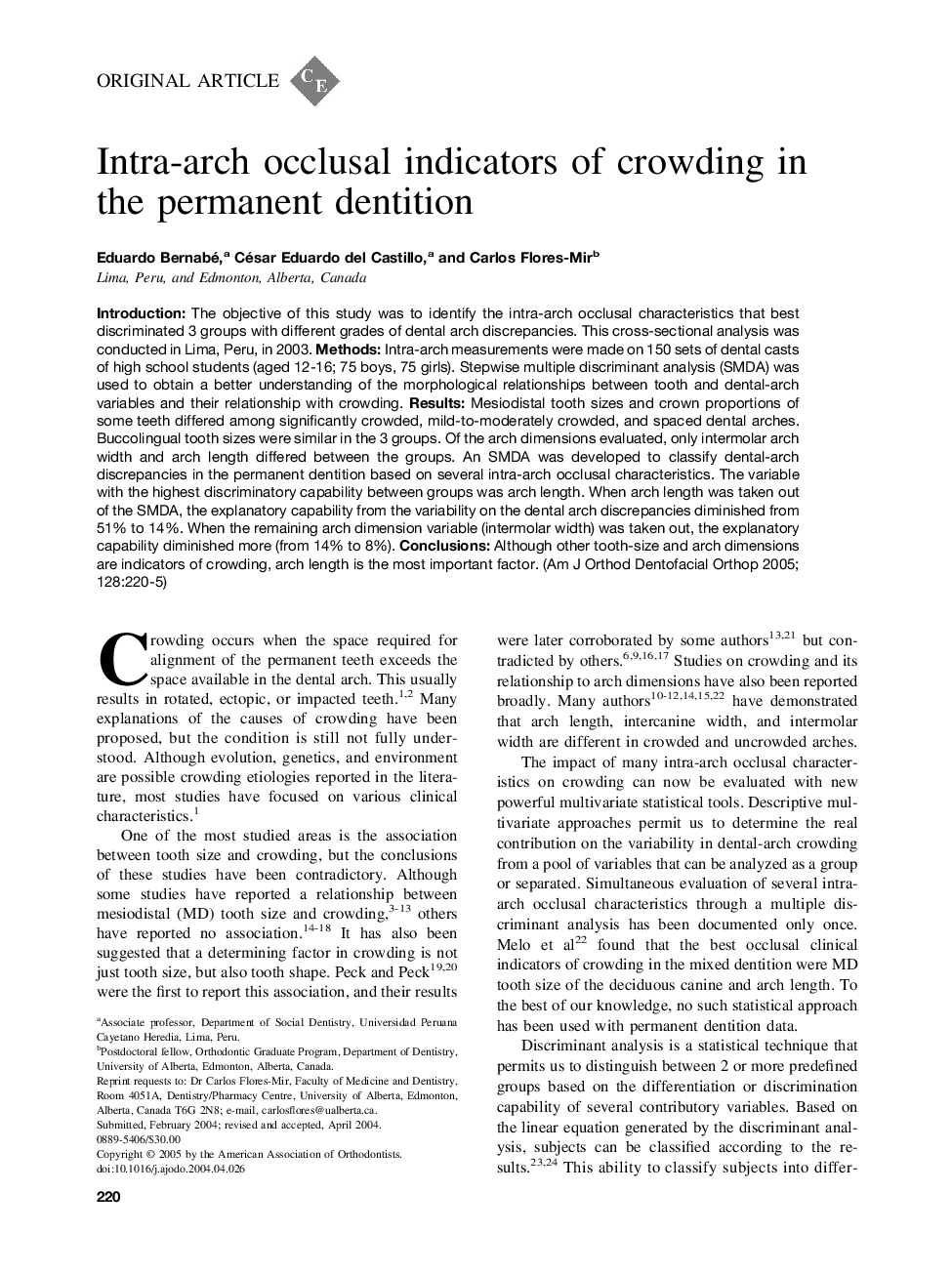| Article ID | Journal | Published Year | Pages | File Type |
|---|---|---|---|---|
| 9992742 | American Journal of Orthodontics and Dentofacial Orthopedics | 2005 | 6 Pages |
Abstract
Introduction: The objective of this study was to identify the intra-arch occlusal characteristics that best discriminated 3 groups with different grades of dental arch discrepancies. This cross-sectional analysis was conducted in Lima, Peru, in 2003. Methods: Intra-arch measurements were made on 150 sets of dental casts of high school students (aged 12-16; 75 boys, 75 girls). Stepwise multiple discriminant analysis (SMDA) was used to obtain a better understanding of the morphological relationships between tooth and dental-arch variables and their relationship with crowding. Results: Mesiodistal tooth sizes and crown proportions of some teeth differed among significantly crowded, mild-to-moderately crowded, and spaced dental arches. Buccolingual tooth sizes were similar in the 3 groups. Of the arch dimensions evaluated, only intermolar arch width and arch length differed between the groups. An SMDA was developed to classify dental-arch discrepancies in the permanent dentition based on several intra-arch occlusal characteristics. The variable with the highest discriminatory capability between groups was arch length. When arch length was taken out of the SMDA, the explanatory capability from the variability on the dental arch discrepancies diminished from 51% to 14%. When the remaining arch dimension variable (intermolar width) was taken out, the explanatory capability diminished more (from 14% to 8%). Conclusions: Although other tooth-size and arch dimensions are indicators of crowding, arch length is the most important factor.
Related Topics
Health Sciences
Medicine and Dentistry
Dentistry, Oral Surgery and Medicine
Authors
Eduardo Bernabé, César Eduardo del Castillo, Carlos Flores-Mir,
